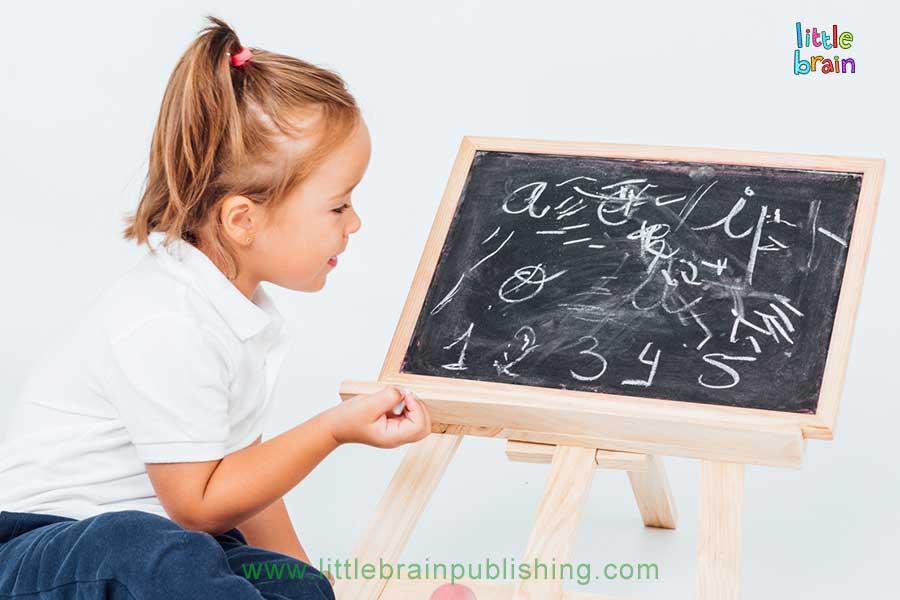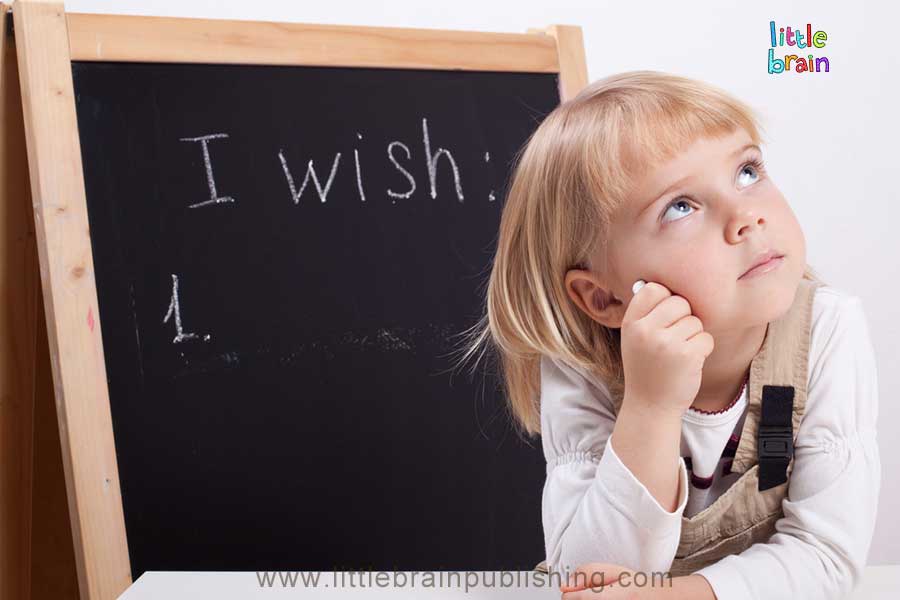Watching kids learn reading, writing, and interacting with math is a milestone every parent cherishes. Every child is different, and each has its interests and grasping power. Thus every child reaches this milestone at other times.
Children are curious beings, and they are keen to explore things. They start learning math from shapes around them to counting their sides. There’s no mandatory set of milestones for kids to learn. But there are milestones the majority of the kids accomplish at the roughly same age. But as I mentioned earlier, every child learns at a different pace. So if your kid hasn’t achieved these milestones? That’s perfectly fine!

These milestones aren’t compulsory within a timeframe. Do not hurry things and skip conceptual development. Mathematics is more about concepts than memorization. Some kids may have accomplished these milestones earlier than other kids. But what parents should look for is concepts.
Some kids can memorize stuff to please their parents. It’s not about who achieves quicker but who has the sharpness in concepts. Regarding the math level a kindergarten kid should know, he may reach the following milestones. There’s no need to hurry, but keeping an eye on your child’s progress is good. Knowing his strengths and weakness in learning will help you support him/her better. Let’s get started!
- In the preschooler phase, the child can easily recognize shapes and can count up to 20. He can sort things based on shape, size, color, and purpose. At the age of 5, he now has better spatial awareness and better counting. Now, the way he counts changes. Counting on fingers continues, but after 5, he shifts the count on the second hand – 6, 7, 8, 9, and 10.
- He recognizes more numbers, and his count increases to 30. He can also link objects to numbers up to 20. And write numbers up to 20 in words.
- As he grows to 6 years old, he will learn to count up to 100 and can count in reverse order.
- He now has some idea of multiplication and division.
- The child can form sets using objects and count each to determine the size of the sets. Initially, a few kids might face trouble deciding the number of items in the set. But the majority of the kids may perform in a group of ten.
- The child possesses a better understanding of ordinal numbers. And can place objects or numbers in sequence.
- The child recognizes currency notes and coins. He also understands their worth.
- Most children start modeling multiplication and division before they are 6 years old. They can easily divide objects into equal parts or groups.
- They can solve everyday activity problems with ease. For example, if you had four chocolates, and I give you one more, how many chocolates do you have? Simple, 4+1=5. Or if I give you ten chocolate and ask you to divide them between 5 people (including you), how many will you get?
- By age 6, the child can easily compare numbers according to their weightage. For example, which is greater, 2 or 5?
- The child easily recognizes two-dimensional shapes and figures like squares, rectangles, circles, and triangles. By now, the child should be able to identify shapes, sizes, and orientations. There needs to be a correlational understanding between 2D and 3D shapes. For example, the circle is closer to the sphere. And they should call these shapes by some informal name, like a ball for a sphere, a box for a cube or cuboid, and a cone as a triangle.
- The kid might now be able to copy and draw symmetrical shapes.
- He starts to understand days, weeks, and essential time concepts.
- After learning counting, addition, subtraction, multiplication, and division, it’s time for measurement. The kid now progresses toward learning measurement. He knows lengths, weights, height, volume, money, and time.
What Should A 5-Year-Old Know Academically?
As a child enters kindergarten, many changes begin to take place inside. Family relationships play an essential role in a child’s development. For example, at the age of 5-6 years, you may expect the child to be more independent, social, and play-friendly, have better coordination, have little tricky emotions, and more.
Academically, the kid will be better and faster at learning. But, slowly, he will like to join forces with other kids to accomplish a common goal. So let’s discuss each academic aspect briefly.
Thinking
A 5-year-old can recognize basic things like days, weeks, months, yesterday, today, tomorrow, and more. They can even spell those words easily. He can now recognize sight words and try decoding a few more. They can also read storybooks on their own.

Mentally they are growing and learning from whatever they see. They are likely to form groups and have a team feeling if they do group activities. As a result, teachers conduct more group activities to develop coordination skills—and individual talents to build self-confidence.
Poem reciting is usually done individually, whereas dance, arts, and sports are group exercises. A 5-year-old kid still needs to get more comfortable with individual tasks. But they need to build self-esteem.
Talking and Language
At this age, children talk a lot! It can be any topic, relevant, irrelevant, or doesn’t matter. Sometimes they might sound sensible, and sometimes not. They are comfortable speaking simple sentences by now. But complex ones might still need some work. They can develop some complex sentences and try to explain them too. Sometimes they may also talk like an adult with complete sense.
Before turning six years, he might even understand jokes and riddles. Slowly he develops comfort in an individual activity and loves to give answers to score well on tests/oral to achieve stars. So he starts making something at home and shows up at a school activity.
He now quickly understands words and can grasp more words than in his preschool times. Learning around 5 to 10 words every day becomes easy for them. Vocabulary growth at this age is flashy.
Mathematics
From a mathematical aspect, the kid has a better range of numbers and understanding. He can rearrange numbers from ascending to descending. He can also link numbers to objects. For example, he can determine and describe basic 2-dimensional shapes easily.
In geometry, they might have an informal name for 3D shapes, like a birthday hat for a cone, a box for a cube, a ball for a sphere, etc. Most kids remember at least 20 numbers and can skip counts, and can count in reverse order or find missing numbers from a series.

Numeracy Development 5-7 Years
The ability to work with numbers is known as numeracy development. It includes recognizing, understanding, counting, solving puzzles, estimating, measuring, and solving arithmetic. Here’s a rough idea of numeracy development between 5 to 7 years old kids.
- Able to count backward from 5 to 20
- Division of large sets (20 or more) equally among x people
- Aware of the sequence of numbers and can rearrange numbers
- Is aware of the fact that the distance between two objects won’t change if they aren’t moved
- Reasoning capabilities increase: If A is taller than B, B is taller than C, and A is taller than C.
- Enhanced aptitude thinking
- Can compare two objects using strings
- Can represent numbers up to 10 using fingers
- Knows doubles of numbers up to 10: 2×2=4, 5×2=10
- Can count up to 100
- Can easily link objects to numbers
- Can compare objects and consider them to be taller, shorter, greater, lesser than, equal, skinnier, fatter, longer, and wider
- Can write two-digit numbers
- Can numbers in their word form. 1 as One, 2 as Two, up to 10 (Ten)
- Can count from any random number. Let’s say numbers between 2 and 18. The numbers are 3, 4, 5, 6, 7 … 17.
- Aware about half, quarter, etc.
- Can measure things using centimeters and meters
- Can recognize and draw two-dimensional shapes
- Gives an informal name to three-dimensional shapes
How High Should A 5-Year-Old Count?
There’s no hard and fast rule for a kindergarten kid. However, a 5-year-old should be able to read and write at least 20 numbers. Older 5-year-olds are expected to count up to 100 numbers.
Should A 5 Year Old Know Addition?
Most of the kids can add numbers at the age of 5. It’s necessary to learn counting before proceeding to addition. In kindergarten, children deal with single-digit numbers to find a total/sum. They learn essential addition and subtraction.
5 Year Old Math Test Examples
- Five-year-old kids usually get counting, addition, and subtraction in their math tests.
- Count the number of triangles in the image
- Count the number of balloons
- Count the number of smiley faces out of the total faces
- Name the color of the object
- How many circles are there in the picture?
- Count aloud the number of dots
- How many people are there in the left square? How many are in the right square? How many altogether?
- How many toys are in the first line?
- How many dogs are in the first line? How many dogs are in the second line? How many altogether?
- Problems on addition: 1+3 =?, 2+3=?, etc
- Measurement: the image of 2 fish, the first one is bigger than the second. Now, which fish is longer?
- Which one of the following is an apple? Or mango.

